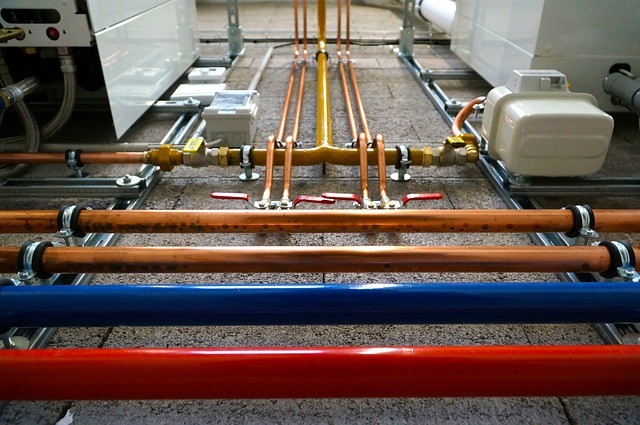Testing and detection of Legionella in water systems is a crucial element of water management plans, particularly in environments like hospitals, hotels, industrial settings, where the bacteria can thrive and pose serious health risks.
What is a Water Management Plan?
A Water Management Plan (WMP) also known as a ‘Written Scheme of Control’ (WSC) identifies and addresses potential risks or issues within your water system, such as waterborne pathogens. It outlines comprehensive methods to tackle these challenges. These plans require ongoing attention; you must regularly update, test, and review them to ensure their effectiveness. Neglecting to properly develop or implement a water management plan can lead to unnecessary costs, compliance problems, and even health risks. The duty holder, formally nominated in writing, will review and implement the WMP to complete and monitor control measures. The responsible person must have sufficient authority and training to ensure timely and effective operational procedures. Refer to ‘The Control of Legionella Bacteria’ in water systems HSG274. Without proper management, the bacteria can grow to dangerous levels, and when inhaled, can cause Legionnaires’ disease.
At Legionella Management Solutions, we will provide a Written Scheme of Control’ for legionella management after we have completed the risk assessment of your water system. The WSC will outline the measures, procedures and responsibilities necessary to prevent and control legionnaires’ disease. It is the responsibility of the assigned ‘responsible person’ to ensure this is in place. Our Written Scheme complies with the Health and Safety Executive’s (HSE) Approved Code of Practice (ACOP) L8, COSHH and Water Supply (Water Quality) Regulations.
Key Components for Legionella Control:
Risk Assessment
Identify all water systems where Legionella could grow such as hot and cold-water systems, then conduct a thorough risk assessment to identify areas where Legionella is most likely to thrive. Consider factors like water temperature, flow rates, system design, and history of contamination. Once you have assessed the risk based on temperature, stagnation, and system maintenance, you can create an effective management plan, including legionella prevention.
At Legionella Management Solutions we understand that a Legionella Risk Assessment is the starting place for all water hygiene maintenance work on hot and cold-water systems. The law requires that a water risk assessment is carried out with a site-specific schematic of your water system. This involves a visit to your site by a Water Risk Assessor who will look at all aspects of your hot and cold-water systems to identify any risks. Our in-house risk assessors will not only complete a detailed risk assessment but also provide a follow-up 1 hour consultation in which we discuss your risk assessment and our findings.
Get in touch with our expert risk assessor today!
Temperature Control
To prevent legionella growth, maintain water temperatures outside the optimal growth range of Legionella (20°C to 45°C). Keep hot water at a minimum of 50°C and store cold water at or below 20°C. If conditions are favourable, the bacteria may grow, increasing the risks of Legionnaires’ disease. Control the risks by introducing appropriate measures outlined in ACoP – L8 Legionnaires’ disease – The Control of Legionella bacteria in water systems and the technical guidance in HSG274. This guidance provides clear instructions on controlling and managing the risks associated with legionella bacteria in water systems. Conduct a legionella bacteria risk assessment to identify the risks present, at a frequency corresponding with risk levels. From there, create a written scheme of control to properly manage and control the risks.
Water systems should operate within the below parameters:
- Cold Water Storage Tanks: 20°C (Maximum)
- Cold water outlets: 20°C (Maximum)
- Hot Water Storage Units (above 15 litres): Flow 60°C (Minimum) 65°C (Maximum)
- Hot water outlets: 50°C (Minimum)
- Hot water return: 50°C (Minimum)
- Point of Use Water Heaters (less than or equal to 15 litres): 50°C (Minimum) at an outlet
- Combination Boilers: 50°C (Minimum) at an outlet
- Instantaneous Water Heaters: 50°C (Maximum) at an outlet
- Hot water outlets with blending valves set to 39-43°C as appropriate. Valves to be serviced twice per annum
- Take temperatures at hot and cold sentinel points.
Regular Maintenance
To ensure your water systems stay safe and clean, make it a habit to regularly disinfect areas prone to biofilm build-up, like showerheads, faucets, and old water tanks. These spots are prime real estate for legionella bacteria! Another key tip: Flush out stagnant water regularly to stop bacteria formation. Keep your water flowing and your systems healthy!
To maintain your water system effectively, follow these detailed tips:
- Flush Infrequently Used Outlets: Ensure all outlets not used at least weekly are flushed on a weekly basis. This includes taps, showers, and any other water-using equipment.
- Expansion Vessels: Flush through and drain expansion vessels regularly to prevent stagnation.
- Legionella Monitoring: Conduct legionella monitoring if there is any doubt about the efficacy of the control regime or if recommended temperatures are not consistently achieved throughout the system.
- Remove Redundant Equipment: Consider removing infrequently used showers, taps, and any associated equipment, including redundant pipework, to reduce the risk of legionella growth.
- Flushing Regime for Little-Used Outlets: Include little-used outlets in your flushing regime. Keep detailed records of flushing activities. Identify these outlets in your risk assessment.
- Temperature Stabilisation: Flush outlets until the temperature at the outlet matches the supply water temperature.
- Dead Legs: Remove dead legs (lengths of pipework no longer used or rarely used) if possible. If removal is not feasible, add them to the weekly flushing schedule.
- Dead Ends: Remove dead ends (capped or sealed lengths of redundant pipework) if possible. If removal is not feasible, fit them with a functioning outlet to allow drainage as part of the weekly flushing schedule.

By following these detailed maintenance tips, you can help ensure the safety and efficiency of your water system.
Monitoring and Testing
Ensure continuous monitoring of water temperatures and system performance to ensure that conditions do not proliferate Legionella growth. You can do this by:
- Temperature Monitoring: Detail how and when water temperatures should be monitored and recorded for both hot and cold water systems.
- Water Quality Testing: Specify the frequency and methods for microbiological testing of water samples
Record Keeping
Document maintenance schedules, test results, and corrective actions to track management and control efforts over time. Maintain records of risk assessments, control measures, inspections, tests, training, and corrective actions and specify how long records should be kept (e.g., at least five years). Without adequate record keeping it is impossible to determine patterns of risk and the failure of existing processes.
Get in touch today and let our expert risk assessors create an effective water management plan!
Testing for Legionella: Methods and Frequency
While there are several methods to detect the bacteria in water systems, routine testing helps ensure that water remains safe for use. In high-risk environments, such as hospitals, care and nursing homes, and large commercial buildings, conduct legionella testing at least quarterly. Increase the frequency if there are known issues with the water system or after significant changes or maintenance. In lower-risk environments, like residential buildings with fewer amenities, annual or bi-annual testing may suffice. However, more frequent testing may be necessary for hot water systems or systems with stagnant water.
By spotting potential risks, controlling environmental factors like temperature, and conducting regular tests, facilities can catch Legionella early and act quickly to prevent outbreaks. With the right measures in place, you can effectively manage the threat of Legionnaires’ disease, ensuring the health and safety of everyone in the building. Stay proactive and keep your water system safe.
Need a Water Treatment Provider to help? Choose Legionella Management Solutions.
Legionella Management Solutions offer comprehensive legionella management from start to finish, unlike many companies that only handle specific tasks like remedial work or risk assessments. We provide a full health report on your water system and legionella status by compiling and reviewing an LRA and identifying key areas for remedial action. At LMS we ensure all plumbing works are carried out by highly trained and experienced plumbers with a Legionella Risk Assessment background to ensure that the remedial actions are compliant. Your Written Scheme of Control must be tailored to suit the specific needs and water systems of the facility in question.
Regular reviews and updates are essential to ensure that the control measures remain effective in preventing the risk of Legionella.
Interested in seeing how it works? Give us a call and see for yourself! 020 8049 5494



